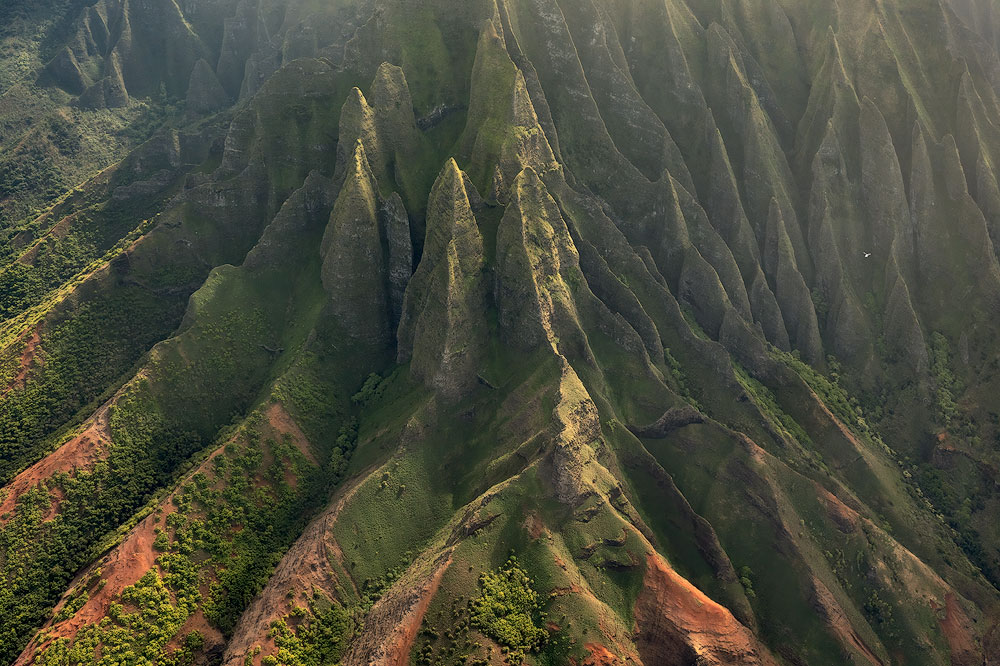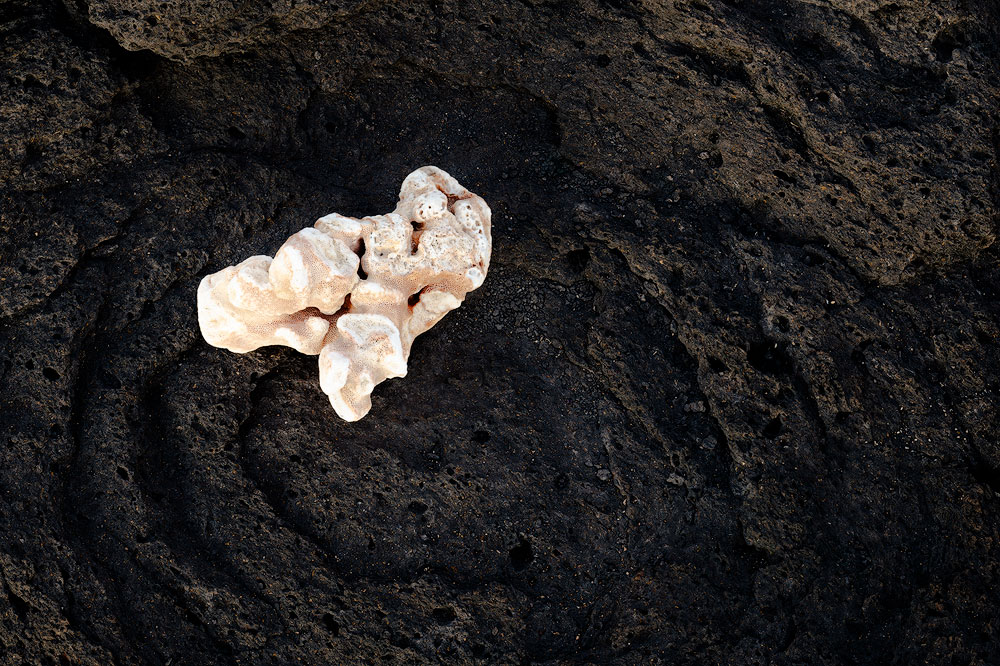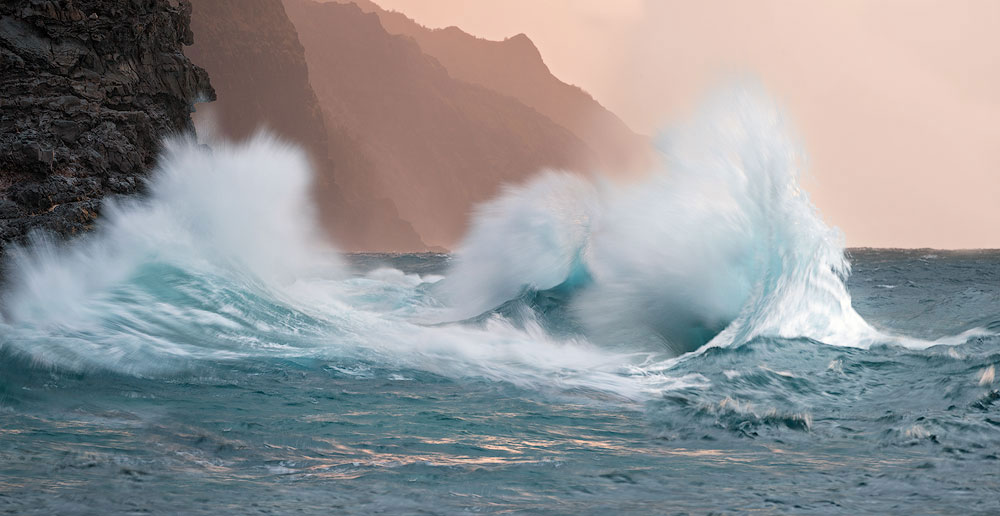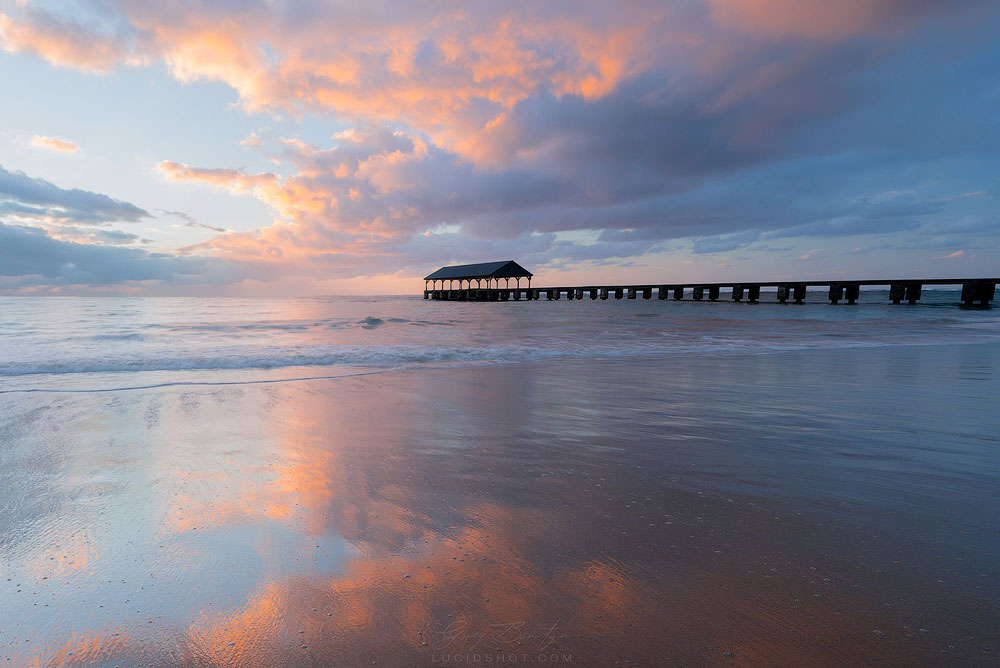Kauai, known as the "Garden Isle," is a dream destination for landscape photographers. Recently, I had the opportunity to capture its stunning coastline, including the majestic Napali Coast, from both land and air. With my Nikon Z9 and an arsenal of lenses — including the Nikon 14-120mm f/4 S and the Nikon 180-600mm f/4.5-5.6 I set out to photograph the breathtaking scenery in the best possible light.
Aerial Photography: Doors-Off Helicopter Experience
One of the best ways to capture Kauai's dramatic cliffs and coastline is from the air. I opted for a doors-off helicopter flight to ensure there were no window reflections obstructing my shots. This allowed me to shoot freely with a clear, unobstructed view. I highly recommend bringing a polarizing filter to minimize glare from the water and a wide-angle lens like the Nikon 14-120mm for capturing the expansive scenery. The Napali Coast, with its rugged, emerald cliffs and deep valleys, is especially spectacular when bathed in golden light during sunrise or sunset.

Land-Based Photography: Exploring the North and South Shores
Beyond aerial photography, I dedicated time to capturing both the southern and northern parts of the island. The southern coast, including areas like Poipu and Spouting Horn, offers stunning golden-hour opportunities, with waves crashing against lava rock formations. The northern coast, particularly around Hanalei Bay, provides an entirely different experience, with lush green mountains and misty peaks forming a dramatic backdrop.

Shooting at Ke'e Beach: Permits and Access
Ke'e Beach, located at the northernmost end of the island, is a prime location for capturing powerful waves and dramatic seascapes. However, access to this area has changed in recent years. Since becoming part of a state park five years ago, permits are now required for entry. If you're planning to photograph Ke'e Beach, be sure to apply for a permit in advance and arrive early to make the most of the light conditions. The beach is an excellent spot to experiment with longer focal lengths, such as the Nikon 180-600mm, to capture the details of waves crashing against the shore.

Tips for Photographing Kauai
If you're planning a trip to Kauai, Hawaii, here are some tips to make the most of your visit:
- Plan for Weather Changes: Kauai's weather can be unpredictable. Bring rain protection for your gear and be prepared for sudden showers, especially in the north..
- Use Polarizers: These help reduce glare from the ocean and enhance the vibrant blues and greens of the landscape.
- Time Your Shots: Sunrise and sunset provide the best lighting for dramatic coastal shots.
- Respect Permits and Regulations: Some areas require permits, so check ahead to ensure you have the necessary permissions. For Ke'e beach access navigate to gohaena.com
- Stabilize for Aerial Shots: While shooting from a helicopter, use a fast shutter speed (1/1000s or higher) to compensate for movement and vibration.
- Gear: For shooting waves or wave collisions use long telephoto lenses such as the Nikon 180-600mm f/5.6 - 6.3. If longer reach is needed, use teleconverter such as the Nikon TC 1.4 to get to 840mm. For more intimate shots of sand or rocky beaches use 14-30mm f/4 or similar super wide angle lenses. For even wider field of view use lenses such as the full frame designed Laowa 10mm f/2.8 lens.
- Shooting Beaches Full of People: Don't be discouraged from shooting beaches full of poeple. They are constantly moving, shoot on a tripod and take multiple shots when people are at different location/place. Load all images as layers, select them all, and from the Layer menu select Layer - Smart Objects - Convert to Smart Object. Once all layers are converted to a single smart object select: Layer - Smart Object - Stack Mode and chose Median. If nothing everlaps (no person's body or part of the body is at the same spot on two or more frames) the final image will be free of people.

An Unforgettable Experience
Kauai offers an incredible variety of landscapes for photographers, from towering sea cliffs to serene beaches and lush valleys. Whether you choose to shoot from the air or land, with proper preparation and the right gear, you can capture the island's breathtaking beauty in all its glory.